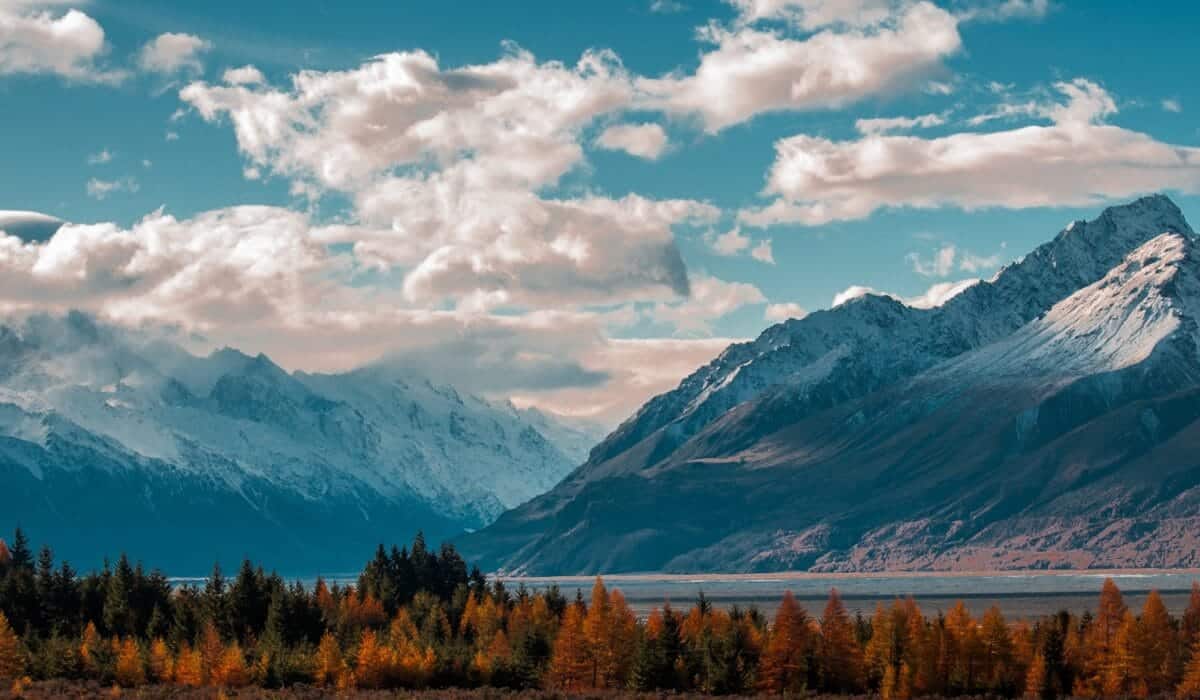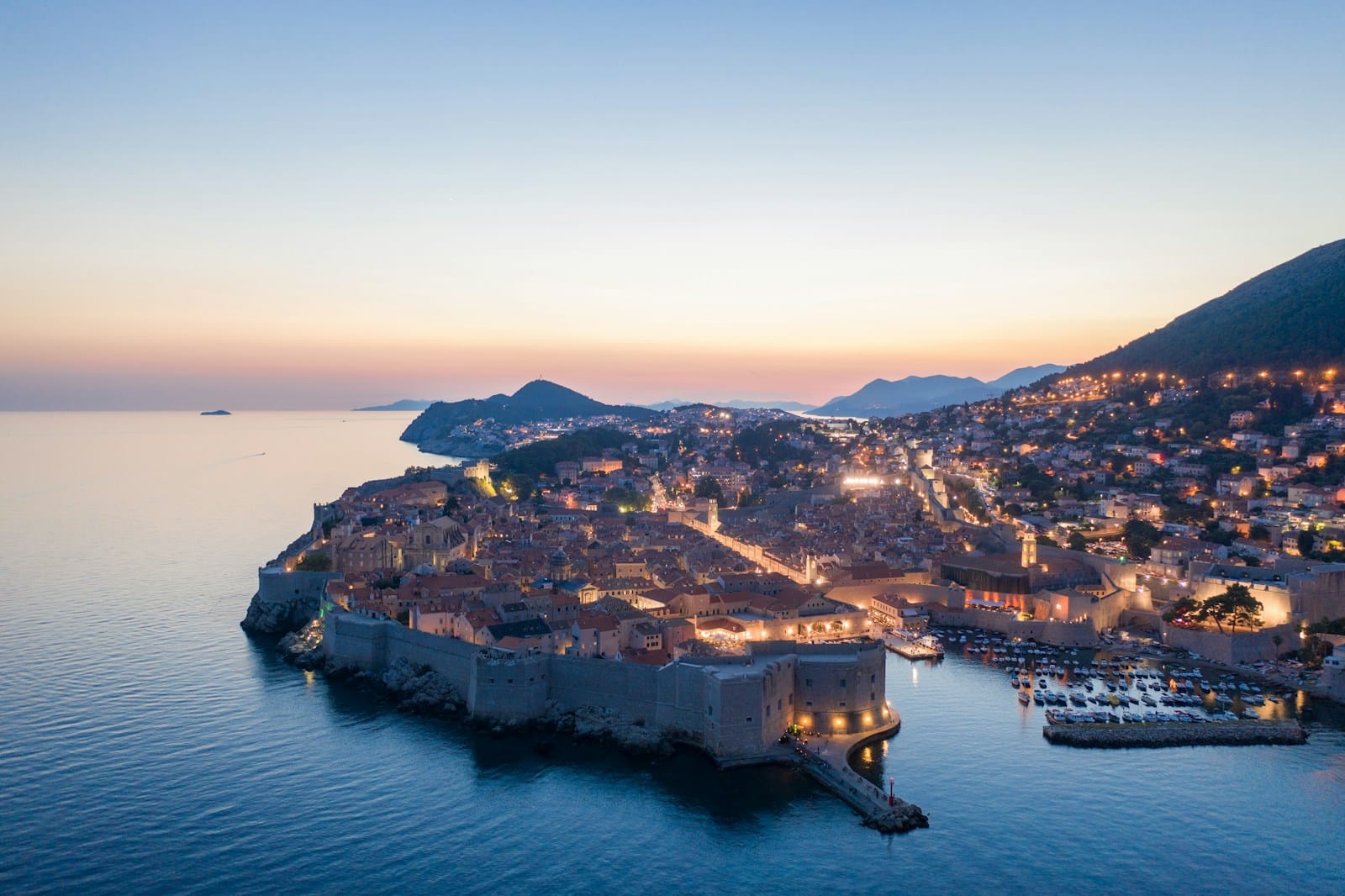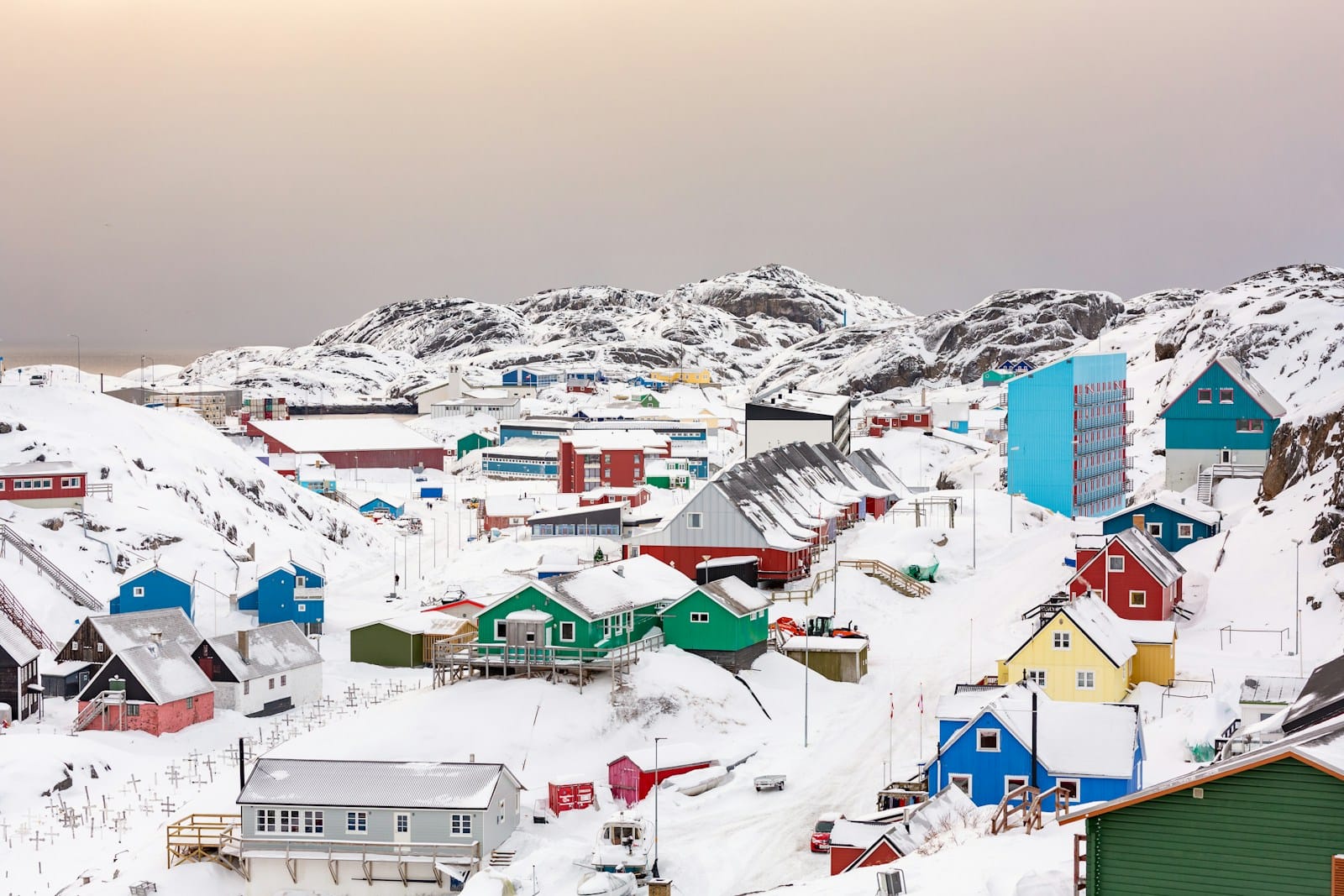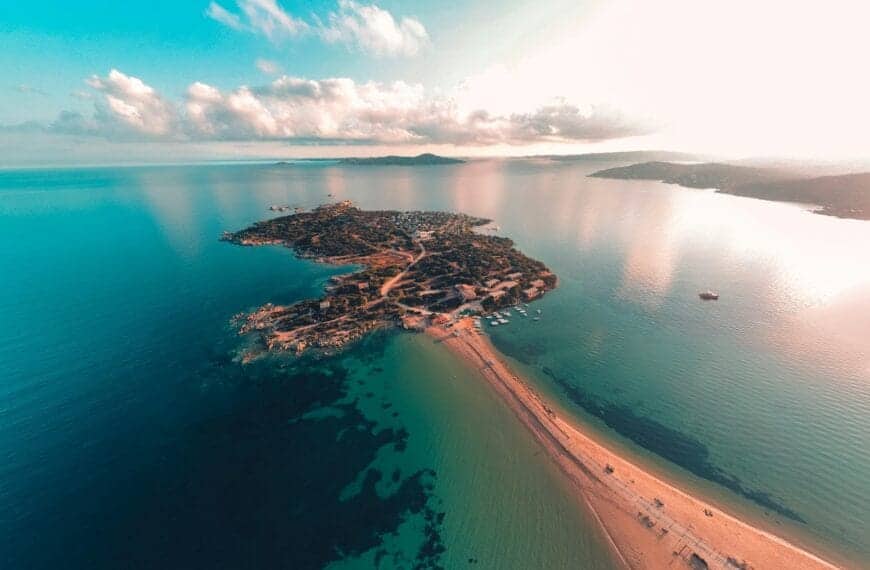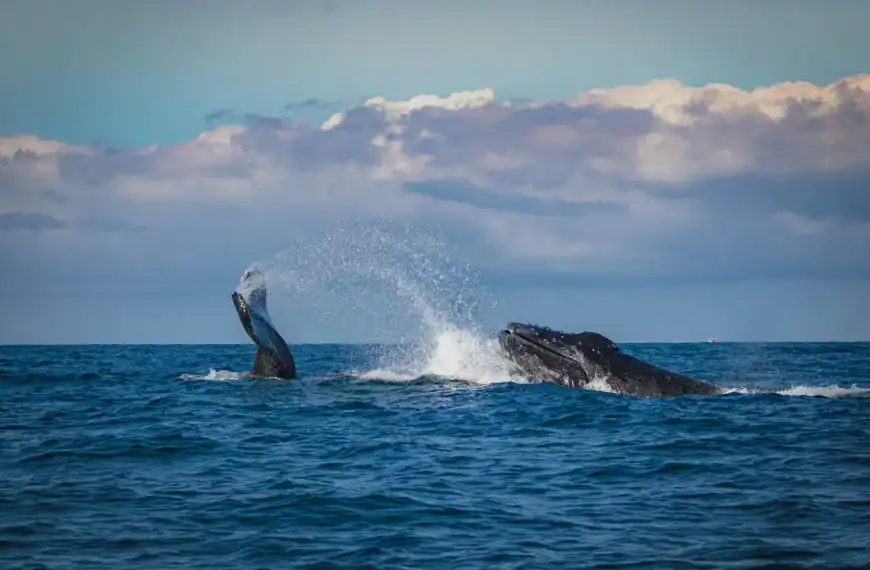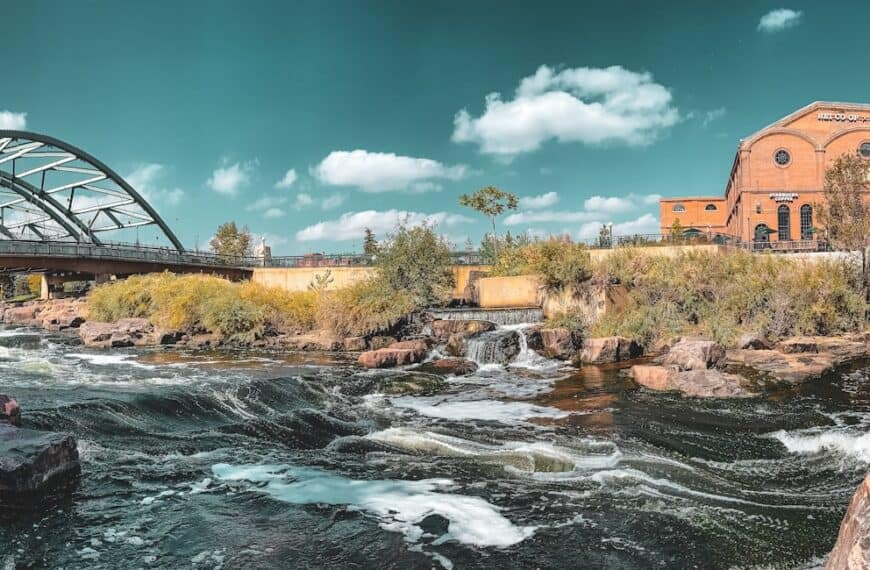New Zealand Travel Guide: Mountains, Māori Legends & Middle Earth
Intro to New Zealand Travel Guide
Imagine snow-capped peaks reflected in mirror lakes, Māori war chants echoing across thermal valleys, and glowworms lighting up cave ceilings like constellations. New Zealand is where nature meets myth, a compact nation overflowing with cinematic landscapes and Indigenous culture.
Split between two islands, it’s a land of extremes — glaciers and beaches, volcanoes and fjords, rolling vineyards and Hobbiton film sets. Whether you’re hiking alpine passes, paddling sacred rivers, or road-tripping coast to coast, New Zealand offers adventure, beauty, and storytelling at every turn.
Start planning your trip with our complete New Zealand Tour Guide — packed with destination tips, seasonal advice, and must-see experiences from the North Island to the Southern Alps.
Travel Destinations in New Zealand
Auckland | Bay of Plenty | Canterbury | Gisborne | Hawke’s Bay | Manawatu-Wanganui | Marlborough | Nelson | Northland | Otago | Southland | Taranaki | Tasman | Waikato | Wellington | West Coast
💡Quick Facts:
Destination: New Zealand
Continent: Oceania
Country: New Zealand (Aotearoa in Māori)
Area: ~268,021 km² (103,483 mi²)
Population: ~5.2 million (2025 est.)
Density: ~20/km²
Capital: Wellington
Largest Cities: Auckland, Christchurch, Hamilton, Tauranga, Dunedin, Queenstown
Regions/Subregions: North Island, South Island, Stewart Island; major regions include Auckland, Wellington, Canterbury, Otago, Waikato, Bay of Plenty
Official Languages: English, Māori, New Zealand Sign Language
Currency: New Zealand Dollar (NZD)
Time Zones: NZST (UTC+12), NZDT (UTC+13, daylight savings Sept–April)
Main Airports: Auckland (AKL), Wellington (WLG), Christchurch (CHC), Queenstown (ZQN)
Climate: Temperate maritime — mild summers, cool winters; varied by latitude and altitude
Known For: Lord of the Rings filming sites, Maori culture, adventure sports, fjords of Milford Sound, Rotorua geothermal areas, Southern Alps skiing, wine regions.
🛂Arrival Info:
Visa Requirements: Most travelers need an NZeTA (New Zealand Electronic Travel Authority).
Visa-Free: 60+ countries (incl. U.S., UK, EU, Canada, Japan, Singapore, South Korea).
Tourist Stay: Up to 90 days (some nationalities 6 months).
Biosecurity: Strict rules on food, plants, animal products; declare at customs.
Immigration Portal: Immigration New Zealand.
🏥Health Info:
Vaccines Recommended: Routine (MMR, Tetanus, Hepatitis A/B). No special vaccines required.
Healthcare: High-quality public and private care; non-residents pay fees.
Hospitals: Auckland City Hospital, Wellington Regional Hospital, Christchurch Hospital.
Risks: Sun exposure (strong UV), outdoor activity injuries.
Tip: Travel insurance essential, especially for adventure sports.
🚑 Check travel insurance options for travel emergencies, delays, and medical needs abroad — Get coverage here
💉 Stay Informed with Official Updates: WHO – International Travel & Health | CDC – Travel health updates
🚨Travel Advisory:
Safety Levels: Very safe, low crime rates.
Risks: Earthquakes, volcanic activity (North Island), weather-related hazards in mountains.
Civil Rights Concerns: Strong protections for LGBTQ+ and minorities.
🌍Track Real-Time Official Updates: US Travel Advisory | UK Foreign Travel Advice | Government of Canada | NZ SafeTravel
🥳Holidays:
Waitangi Day: Feb 6 (Treaty of Waitangi commemoration)
ANZAC Day: April 25
Christmas Day: Dec 25
Boxing Day: Dec 26
New Year’s Day: Jan 1
Labour Day: 4th Monday in October
💰Visitor Info:
Currency Use: Credit/debit widely accepted; ATMs everywhere.
Tipping: Not customary; rounding up or 5–10% appreciated.
Duty-Free: 3 bottles of wine, 3 bottles of spirits, 50 cigarettes.
Daily Budget (avg.):
Budget: $70–100 NZD
Mid-range: $150–250 NZD
Luxury: $350+ NZD
🛫Airports:
Auckland (AKL): Main international hub, direct flights to Asia, Americas, Middle East.
Wellington (WLG): Domestic + Australia.
Christchurch (CHC): Gateway to South Island.
Queenstown (ZQN): Popular for adventure/ski tourism.
🧳 Delayed or canceled flight? Check if you’re eligible for compensation
🚍Transport:
Urban: Buses in cities; ferries in Auckland/Wellington; limited metros.
Intercity: InterCity buses, KiwiRail trains (Northern Explorer, Coastal Pacific, TranzAlpine).
Driving: Left side; rental cars/campervans popular.
Notes: South Island best explored by car; Cook Strait ferries connect North–South Islands.
🚗 Book reliable airport transfers and in-city rides in advance. Reserve your ride here
🛰️Connectivity:
SIM/eSIM: Spark, Vodafone NZ (One NZ), 2degrees.
Network: Excellent in cities, limited in rural/mountainous areas.
Wi-Fi: Common in hotels, cafes, airports; sometimes paid in rural areas.
🛜 Stay connected abroad with affordable eSIM data packs. Get your eSIM here
📜Laws & Etiquette:
Alcohol: Legal drinking age 18.
Smoking: Banned indoors and in many outdoor public places.
Dress Code: Casual; outdoor/adventure clothing common.
LGBTQ+: Very inclusive; same-sex marriage legal since 2013.
Social Norms: Respect Māori culture (hongi greeting, marae etiquette); tipping not expected but appreciated.
👮Emergency Info:
Emergency Number: 111 (police, fire, ambulance).
Tourist Assistance: Police and i-SITE visitor centers provide help.
Embassy Links:
US Embassy Wellington
UK High Commission Wellington
🏛️ Use embassy locator tools: Embassies Worldwide
🌞Weather:
Best Time: Dec–Feb (summer, beaches, outdoor activities) & March–May (autumn, wine tours, hiking).
Winter: June–Aug, snow in South Island, skiing in Queenstown/Wanaka.
Spring: Sept–Nov, mild with blossoms, lambing season.
Autumn: March–May, colorful foliage, pleasant temperatures.
🌦️ Stay prepared—check the weather forecast for your destination — Weather Forecast
New Zealand by Region – Where to Go
New Zealand’s diversity shines through its regional contrasts — from subtropical beaches to snow-dusted peaks.
Northland & Bay of Islands
- This northern tip blends warm seas with Māori heritage.
- Paihia and Russell are popular beach towns with dolphin tours and sailing.
- Waitangi is a major cultural site where New Zealand’s founding treaty was signed.
- Cape Reinga marks the spiritual meeting point of oceans in Māori belief.
Auckland & the Upper North Island
- The country’s biggest city is a harbor hub for urban adventure.
- Auckland features volcanic cones, food markets, and waterfront neighborhoods.
- The Coromandel Peninsula has golden beaches, hot springs, and Cathedral Cove.
- The Waitomo Caves offer surreal glowworm-filled caverns.
Rotorua, Taupō & the Central North Island
- A geothermal wonderland and Māori cultural heartland.
- Rotorua is known for geysers, mud pools, and cultural performances.
- Lake Taupō is New Zealand’s largest lake, great for trout fishing and skydiving.
- Tongariro National Park offers alpine treks and Lord of the Rings scenery.
Wellington & Lower North Island
- New Zealand’s creative capital blends politics, art, and coffee.
- Wellington has museums like Te Papa, a walkable waterfront, and cable cars.
- Nearby Wairarapa is full of vineyards, mountains, and dark sky reserves.
Top of the South Island: Marlborough, Nelson & Abel Tasman
- A mix of vineyards, golden beaches, and outdoor escapism.
- Marlborough is wine country — especially Sauvignon Blanc.
- Abel Tasman National Park offers sea kayaking and coastal hikes.
- Nelson is a sunny town with arts, galleries, and access to wild trails.
West Coast & Southern Alps
- One of New Zealand’s most dramatic regions — glacier meets rainforest.
- Franz Josef and Fox Glaciers are key highlights, along with scenic flights.
- Punakaiki is famous for Pancake Rocks and blowholes.
- Arthur’s Pass connects the coast to the Southern Alps.
Canterbury & Christchurch Region
- Canterbury is flatland turned adventure base.
- Christchurch is rebuilding as a vibrant, creative city post-earthquake.
- Banks Peninsula and Akaroa deliver harbor views and French charm.
- Aoraki/Mount Cook is the tallest peak, surrounded by stargazing spots.
Otago & Southland
- Home to Queenstown, adventure capital of the world.
- Queenstown is famous for bungee jumping, hiking, and Lake Wakatipu.
- Wanaka is quieter but just as scenic — a base for skiing and skydiving.
- Dunedin and the Otago Peninsula feature wildlife, beaches, and historic charm.
Fiordland & Stewart Island
- Wild, remote, and jaw-dropping.
- Milford Sound and Doubtful Sound are best explored by boat or plane.
- Te Anau is the starting point for Fiordland hikes like the Kepler and Milford Tracks.
- Stewart Island is a birdwatching paradise — and your best chance to see a kiwi in the wild.
Top Places to Visit in New Zealand
From iconic nature to Indigenous culture, these are the top experiences by theme.
Cultural & Urban Experiences
- Wellington — Creative capital with craft beer, museums, and cable cars.
- Rotorua — Māori heritage, geothermal parks, and cultural performances.
- Dunedin — Scottish-inspired architecture, wildlife, and literary history.
- Auckland — Diverse cityscape with beaches, volcano hikes, and global food.
Nature & Hiking Escapes
- Fiordland — Kayak beneath waterfalls in Milford Sound or hike the Routeburn Track.
- Tongariro National Park — Trek through volcanic terrain on the Tongariro Alpine Crossing.
- Abel Tasman — Combine beach camping and kayaking along golden shores.
- Mount Cook — Base for glacier walks and stargazing in the dark sky reserve.
Islands, Beaches & Coastal Trails
- Bay of Islands — Dolphin tours, sailing, and subtropical serenity.
- Coromandel — Snorkeling, sea caves, and hot water beaches.
- Stewart Island — Remote birdlife, rainforest hikes, and Māori stories.
- Catlins Coast — Waterfalls, sea lions, and penguin sightings.
Adventure & Adrenaline
- Queenstown — Jet boating, skydiving, canyon swings, and alpine hikes.
- Taupō — Bungy jumps, lake cruises, and geothermal rafting.
- Wanaka — Paragliding, glacier heli-hikes, and lakefront trails.
- Kaikōura — Whale watching, dolphin swimming, and crayfish feasts.
How to Choose Where to Go in New Zealand
Choose based on your priorities — here’s how to build your route.
- If you love road trips and variety, explore both islands with a campervan. Start in Auckland and end in Queenstown (or reverse). Two to three weeks is ideal.
- If you want culture and geothermal landscapes, focus on the North Island — especially Rotorua, Taupō, and Wellington. Pair with East Cape for Māori-led experiences.
- For pure nature and hiking, choose the South Island. Base around Queenstown, Fiordland, and Mount Cook for alpine scenery, multi-day treks, and remote getaways.
- If you’re short on time, explore one island well. North Island is great for volcanoes, beaches, and Indigenous culture. South Island is for fjords, mountains, and dramatic drives.
- For a family-friendly trip, combine Auckland, Rotorua, and Nelson or Christchurch. These areas offer wildlife parks, easy hikes, and interactive museums.
- If you’re visiting in winter, head to Queenstown or Wanaka for skiing, or enjoy hot pools and indoor culture in Rotorua or Christchurch.
How to Get Around New Zealand
New Zealand is ideal for self-drive adventures, but other travel options exist depending on your route and comfort.
- Car rentals are the most popular and flexible way to explore both islands. Scenic roads, well-maintained highways, and roadside stops make it perfect for DIY travel. Remember to drive on the left.
- Campervans are widely used by travelers wanting to explore nature without hotel stays. Look into spaces at holiday parks and Department of Conservation (DOC) campgrounds.
- Domestic flights link Auckland, Wellington, Christchurch, Queenstown, and many regional airports. They’re time-saving for long-distance travel between islands.
- Intercity buses like InterCity and NakedBus connect most towns and cities. It’s a low-cost way to explore but slower than flying or driving.
- Train travel is limited but scenic. The TranzAlpine from Christchurch to Greymouth and Coastal Pacific between Picton and Christchurch offer stunning views.
- Ferries connect the North and South Islands via the Cook Strait. The Interislander and Bluebridge run between Wellington and Picton, carrying both passengers and vehicles.
- In cities, walking and cycling are common. Public transport is reliable in Auckland and Wellington, with apps like AT Metro and Metlink offering real-time updates.
Travel Budget & Costs in New Zealand
New Zealand is a mid- to high-cost destination, but your budget will vary based on travel style and region.
- Budget travelers can expect to spend $60–$90 USD per day by camping, self-catering, and using bus passes or shared vans.
- Mid-range travelers spend around $120–$200 USD per day on private rooms, restaurant meals, rental cars, and national park access.
- Luxury travelers often spend $250–$600+ per day with boutique lodges, guided tours, scenic flights, and gourmet food.
- Sample costs include a rental car at $40–$80/day, a dorm bed from $20–$40/night, a meal out at $10–$25, and a scenic helicopter ride for $250+.
Savings tips:
- Cook your own meals or use supermarket deli counters.
- Use DOC campsites — they’re affordable and in beautiful locations.
- Combine free hikes with a few splurges like a glowworm cave or fjord cruise.
- Travel in the shoulder seasons (spring and fall) for discounts on lodging and car rentals.
Best Time to Visit New Zealand
New Zealand is a true year-round destination, but each season brings distinct highlights.
- Summer (December to February) is peak season with long days and beach weather. Ideal for hiking, water sports, and festivals. Expect crowds in hot spots like Queenstown and Abel Tasman.
- Autumn (March to May) brings golden foliage, cooler temperatures, and fewer tourists. Great for wine country, photography, and quiet hikes.
- Winter (June to August) is ski season in the South Island and a great time for hot springs and indoor culture in Rotorua, Queenstown, and Christchurch. Fewer crowds, but shorter days.
- Spring (September to November) offers wildflowers, baby animals, and rising temperatures. Great for campervan travel, garden tours, and off-season deals.
For alpine trekking, late summer and early fall (February to April) are ideal — trails are clear, and weather is more stable.
Must-See Experiences in New Zealand
From geothermal wonders to glacier hikes, here are iconic things to do in New Zealand.
- Hike the Tongariro Alpine Crossing — a one-day trek across lava fields, emerald lakes, and craters.
- Cruise through Milford Sound or kayak in Doubtful Sound — surrounded by sheer cliffs and cascading waterfalls.
- Visit Hobbiton near Matamata — walk through the Shire’s lush green hills from the Lord of the Rings films.
- Soak in Rotorua’s hot pools after visiting geysers and Māori cultural shows at Te Puia or Mitai Village.
- Skydive over Lake Taupō or Queenstown for a mix of thrills and epic scenery.
- Take a glowworm cave tour in Waitomo — walk, raft, or boat under glowing ceilings.
- Cycle the Otago Central Rail Trail, a scenic route through gold-mining towns and vineyard valleys.
- Fly over Franz Josef Glacier for an ice landing, or heli-hike the crevasses with a guide.
- Taste Sauvignon Blanc in Marlborough or Pinot Noir in Central Otago during vineyard bike tours.
- Visit the Waitangi Treaty Grounds for a deep dive into New Zealand’s founding and Māori–Crown history.
Book immersive New Zealand tours and experience unforgettable things to do in New Zealand — from sacred temple rituals and highland treks to floating markets and lakeside food adventures.
Best Travel Itineraries in New Zealand
Design your route based on trip length and travel goals. These sample routes cover different paces and regions.
7-Day North Island Highlights:
Auckland → Rotorua → Taupō → Tongariro → Wellington
Great for culture, geothermal sights, and a short active route.
7-Day Family Itinerary:
Auckland → Hobbiton → Rotorua → Taupō → Napier
Best for light activity, cultural fun, and beach-and-lake time.
10-Day South Island Explorer:
Christchurch → Lake Tekapo → Mount Cook → Queenstown → Milford Sound → Wanaka
Perfect for mountain lovers, nature, and scenic drives.
10-Day Adventure & Wine Trail:
Queenstown → Wanaka → Central Otago → Franz Josef → Punakaiki → Nelson → Marlborough
Great for foodies, adrenaline-seekers, and photographers.
14-Day Full New Zealand Loop:
Auckland → Coromandel → Rotorua → Wellington → Picton → Abel Tasman → West Coast → Queenstown
Ideal for those renting a car or campervan and wanting a mix of coasts and peaks.
Local Cuisine & Culinary Experiences
New Zealand’s food is fresh, seasonal, and influenced by Māori, British, and Pacific Island traditions.
- Lamb is a staple — often slow-roasted or grilled with herbs. Pair with local Pinot Noir.
- Green-lipped mussels are a Marlborough specialty, served steamed or in chowder.
- Fish and chips are a classic Kiwi meal — best enjoyed beachside in paper wrappers.
- Hāngi is a traditional Māori method of cooking meat and vegetables underground with hot stones.
- Pavlova is a meringue-based dessert topped with whipped cream and kiwifruit — a Kiwi classic.
- Whitebait fritters, made from baby fish, are a West Coast delicacy.
- Feijoas, tamarillos, and kiwifruit are popular seasonal fruits, often found at farmers’ markets.
- Flat white coffee originated in New Zealand — smoother than a cappuccino, stronger than a latte.
Top culinary experiences include vineyard lunches, Māori hangi dinners, seafood festivals, and urban food tours in Auckland and Wellington.
Travel Safety & Cultural Etiquette in New Zealand
New Zealand is one of the world’s safest and most welcoming countries, but it’s still important to travel smart.
- Crime rates are low, though petty theft can occur in cities or crowded tourist spots — always lock your car and don’t leave valuables unattended.
- Road safety is essential — many roads are narrow, winding, or unsealed. Drive cautiously and allow extra time, especially in winter or mountain areas.
- Weather can shift rapidly. Always check mountain and coastal forecasts if hiking, boating, or driving.
- New Zealanders (Kiwis) are relaxed, friendly, and honest. Greetings are informal, and humor is dry.
- Respect for Māori culture is important. Learn basic words like “kia ora” (hello), and observe proper conduct at marae (meeting grounds) and cultural sites.
- Tipping is not mandatory, but 10% is appreciated in restaurants or for excellent service.
- Pack insect repellent (for sandflies), sunscreen, and layered clothing. New Zealand’s UV levels are among the highest in the world.
Where to Go Next – Pair New Zealand with These Destinations
- Australia — Just a short flight away, offering a perfect contrast between city life and outback adventure. Sydney, Melbourne, and Tasmania pair well with NZ itineraries.
- Fiji — Easy to access from Auckland or Christchurch. Relax on tropical beaches after a trek-heavy trip.
- Cook Islands — A relaxed, family-friendly alternative to Fiji with a strong Polynesian connection and direct flights from Auckland.
- Singapore — A great stopover between New Zealand and Europe or Asia. Clean, modern, and food-focused.
- Tahiti — Another island add-on for couples or beach lovers, reachable via Auckland with stunning lagoons.
Explore these destination guides for regional pairing ideas:
Australia Travel Guide | Fiji Travel Guide | Cook Islands Travel Guide | Tahiti Travel Guide | Singapore Travel Guide
Final Planning Checklist for New Zealand
- Book flights, campervans, and lodging early — especially in peak summer or during school holidays
- Reserve Great Walks and guided activities (like glacier hikes or Hobbiton) several months in advance
- Check visa requirements and apply for the NZeTA (Electronic Travel Authority) online
- Purchase travel insurance covering outdoor sports, car rentals, and flight disruptions
- Download offline maps (like Maps.me or Google Maps) and translation apps
- Pack for four seasons — rain, sun, and cold can happen in a single day
- Drive cautiously on gravel roads, single-lane bridges, and mountain passes
- Learn about Māori customs and history — it will enrich your entire experience
- Bring a reusable water bottle — New Zealand has some of the world’s cleanest tap water
- Support local — buy directly from artisans, farmers, and small tours for deeper connections
Explore New Zealand with confidence using our trusted tips, local insights, and region-by-region planning tools.

